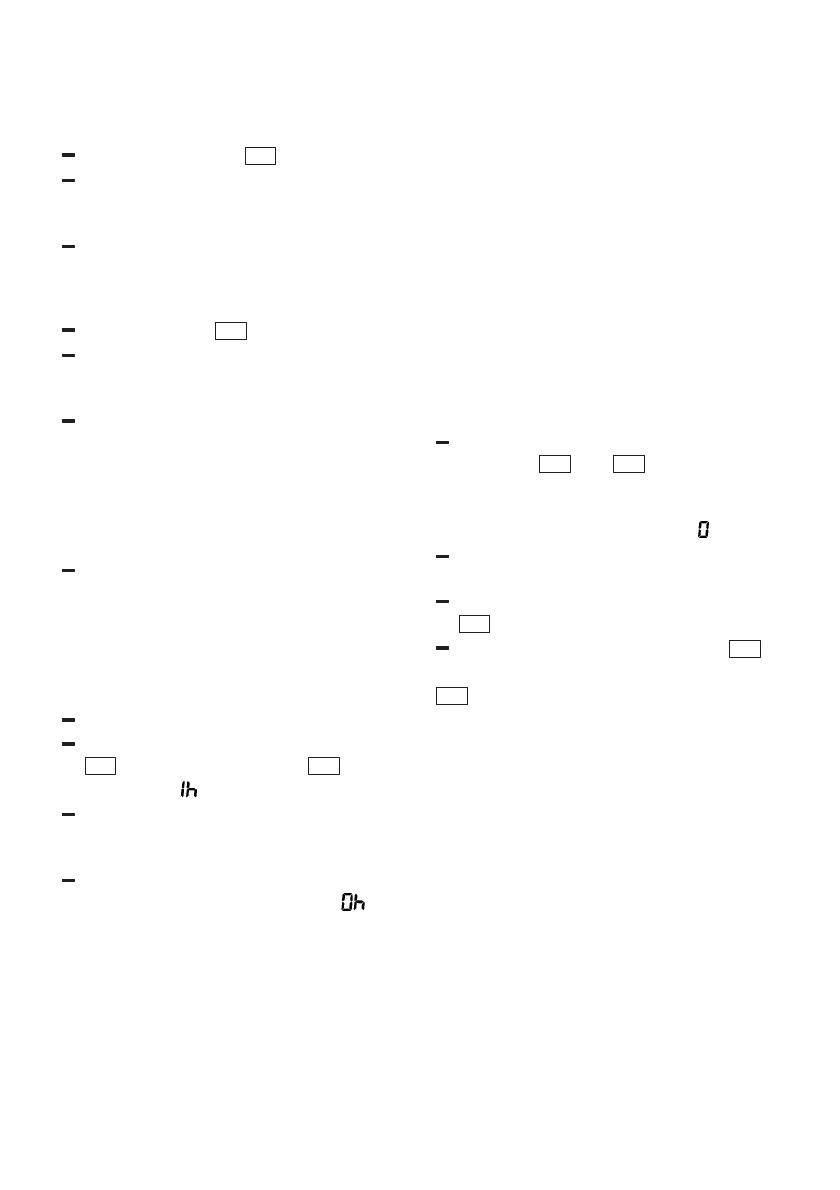
en
38
Switching the dishwasher OFF
Several minutes after the programme has
ended:
Set the main switch 1 to OFF.
Turn the water tap off.
(Does not apply when Aqua-Stop unit
has been fitted)
Remove dishes, etc. when they have
cooled down.
Interrupting the programme
Set main switch 1 to OFF.
Indicator lights extinguish. The
programme is retained in the
dishwasher memory.
If the hot water was switched ON or the
appliance has already heated up and
then the appliance door opened, leave
the door ajar for several minutes and
then close.
Otherwise, the appliance door may fly
open due to expansion.
In order to continue with the stored
programme, set the main switch to ON
again.
Programming the timer
You can delay the start of a programme in
increments of one hour for up to 19 hours.
Switch dishwasher ON.
Immediately press the TIMER button
4 . The numerical display 3
changes to .
Press the TIMER button as many times
as necessary until the numerical display
shows the required delay.
To erase the time delay setting, keep
pressing the TIMER button until
appears in the numerical display.
You can change your programme
selection as often as you like during the
intervening period before the dish-
washer starts up.
Time-remaining indicator
The time-remaining indicator is
self-learning. When the programme
begins, it displays the estimated duration
of that programme. This figure is based
upon the duration of the previous
programme, or if the dishwasher is being
used for the first time, the duration of the
programme used for testing the appliance
in the factory. While the programme is
running, the indicator shows the amount of
time before the programme ends. The time
remaining is also adjusted to account for
the temperature of the water supply and
the number of dishes.
Cancel programme (Reset)
Only when the master switch is ON.
Press the
A and C buttons
simultaneously, and hold them pressed
for approx. 3 seconds.
The numerical display shows
.
The programme continues for approx.
1 min.
When it has ended, set the main switch
1 to OFF.
Close the detergent compartment 30 .
To restart the dishwasher, set main switch
1 to ON again and select desired
programme.
Changing the programme
It is possible to change the programme
within 2 minutes after you have switched
the dishwasher on.
Should it be necessary to change the
programme after this period, the
programme cycle that has already been
begun (e.g. washing) will be completed
first of all.
The new remaining time displayed is the
sum of the remaining time from the
preceding programme cycle and the
remaining time attributable to the new
programme that has been selected.



















